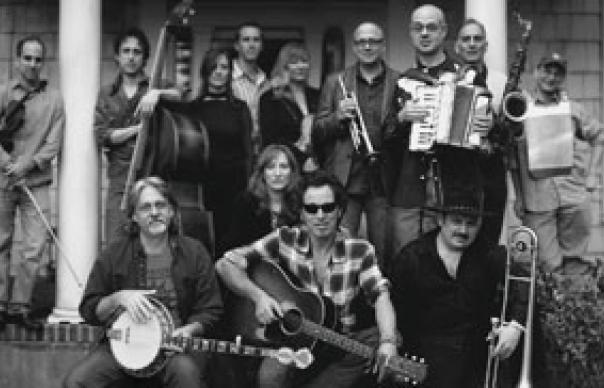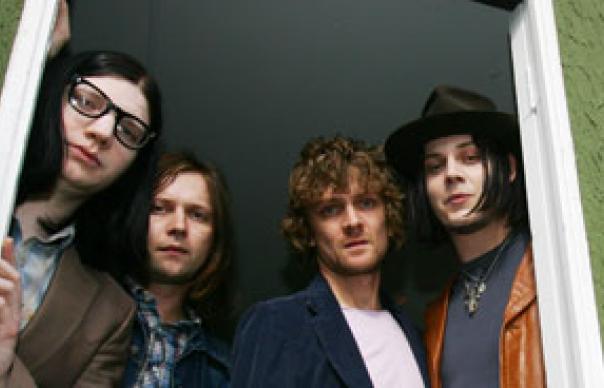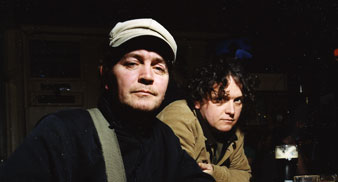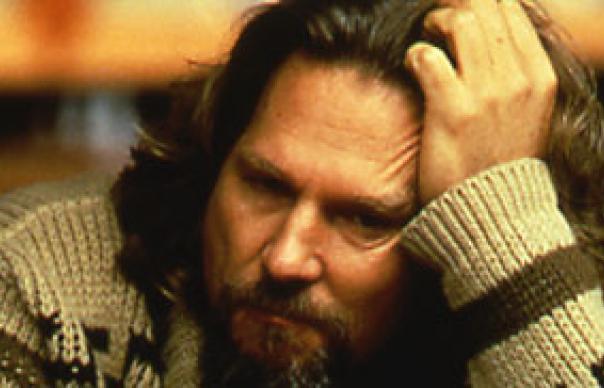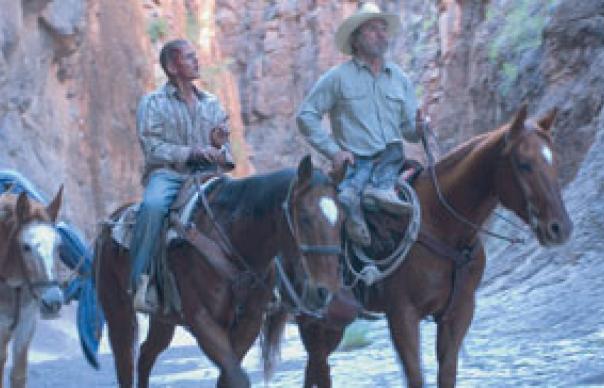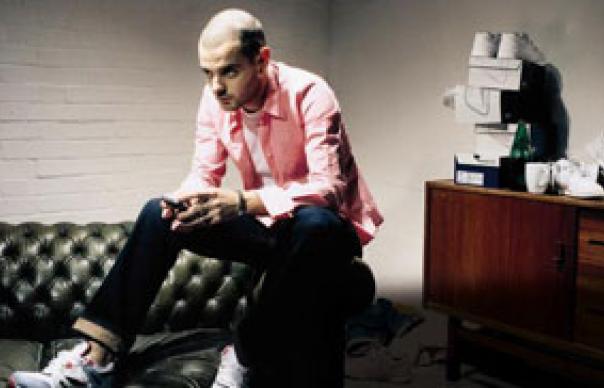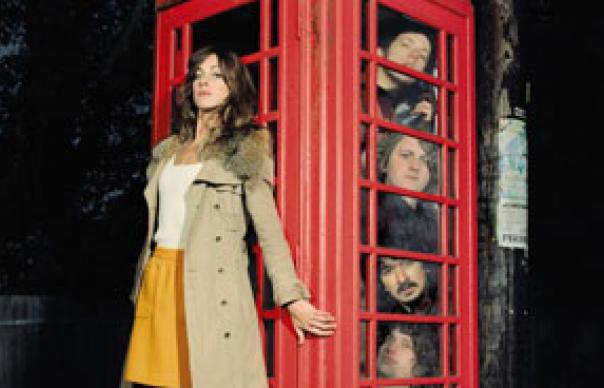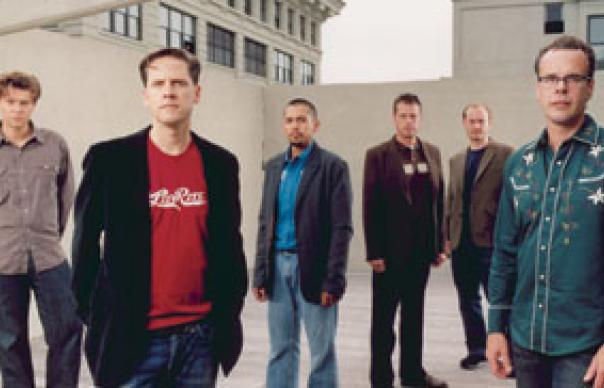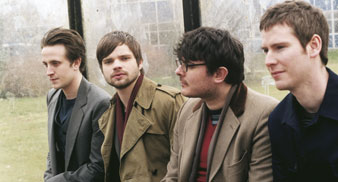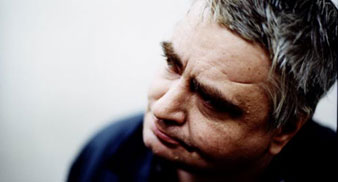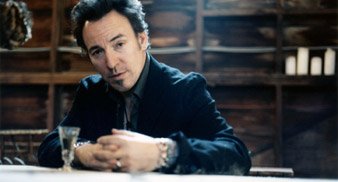It’s chastening to remember that Scott Walker’s first four solo records were recorded and released within three years. We’re now comfortable with the paradox that while fashion speeds up, culture slows down, but even by current standards, Walker is taking his own sweet time. If we include the four Scott songs on The Walker Brothers’ Nite Flights (and “The Electrician” is certainly the founding stone of this new era), then Scotts 5 through 8 span 28 years. It’s the pace of a novelist, or a poet, maybe; slow nights, massing to years, of editing and rewriting. It certainly seems to be how Walker now sees himself. “Every single sound in the track is related to the lyric in some way,” he said around the time of 1995’s Tilt. “I'm trying to go for something as carved down as possible.” That ambition has been abundantly achieved on The Drift, a record that’s pared down yet cosmically dense, as though compacted by geological pressures. Does that make it a diamond? Well, let’s say it’s the kind of rock record Samuel Beckett might have made: gnomic, terrifying, bleakly funny, often utterly unfathomable and advancing by its own strange logic. For all its industrial scree and jump-cut imagery, Tilt still bore the signature of Walker the existential balladeer, Jean-Paul Sinatra. “Farmer in the City” and “Patriot” were, in their way, as lush as “Montague Terrace”. The Drift offers no such consolation. Guitars scratch savagely, like Link Wray auditioning for Stockhausen. Rhythms are minimal, martial and produced, on occasion, by hammering a wooden box with a brick or thumping at a pig carcass. Strings lurch sickeningly with Bernard Herrmann psychosis, and Walker’s mournful baritone has been superseded by an urgent tenor, declaiming short phrases that merely hint at melody. “Cossacks Are” sets the tone. A two chord twang, a desperate rhythm, and a series of implored phrases that seem to evade narrative: “A moving aria for a vanishing style of mind”; “You could easily picture this in the current top ten”; “Medieval savagery, calculated cruelty.” This last, you might remember, was Chief Prosecutor Carla De Ponte’s summation of Slobodan Milosevic’s crimes in the former Yugoslavia, crimes that haunt the whole record. One aspect of this Drift is continental: Europe’s sleepwalk back to fascism. With a few hunches and a thorough afternoon on Google, you could trace other phrases back to book reviews, George Bush’s entreaties to Jacques Chirac, eulogies for Pope John Paul II. The collage effect, splicing the world historical with tabloid tittle tattle, is reminiscent of John Berger, years ago, flicking through the Sunday Times Magazine, from the spectacle of Bangladeshi refugees to aftershave ads, and declaring, “The culture that produced this incoherence… is insane”. Insane perhaps, but this style of blind quotation and vivid montage provides much of the method of The Drift. I could devote the rest of this issue simply to exegesis of these often baffling songs. The already infamous line from “Jolson And Jones” - “I’LL PUNCH A DONKEY IN THE STREETS OF GALWAY!” - refers to Allan Jones; not Uncut’s editor, but father of the younger Scott’s matinee idol Jack Jones. Jones père was a classically trained tenor who wound up in Hollywood and became best known for the novelty hit “Donkey Serenade”. Walker’s song has him commiserating with a drunk, paranoid Al Jolson in a ‘40s Vegas that doubles as the suburb of hell set aside for washed-up crooners. I’ll leave the other songs to your own suspicions, investigations and imaginations. What’s clear is the seriousness of Walker’s intent. This is a record of an ambition that’s rare anywhere in our culture, let alone pop music. This aspiration leaves The Drift wide open to accusations of absurd pretension. “Jesse” is a vexed meditation on 9/11 that quotes the guitar phrase from “Jailhouse Rock”, and makes a dream equation between the twin towers and Elvis and his stillborn twin Jesse Garon. “Buzzers” finds an obscure link between Balkan wars (the repeated refrain “kad tad” is Serbian for “one day”, the motto of patient vengeance-hunger) and the evolution of horses. “The Escape” is a paranoid vision that seems to conclude with a demonic Daffy Duck rasping, “What’s up doc?” Is it impossible to take with a straight face? Frequently. Will it disappoint those hoping for a return to elegant classicism? Profoundly. Does it strike you with a lurid, imagistic and nightmarish urgency? Always. Almost uniquely, this is a record that genuinely sounds like nothing you have heard before. If you can rise to its portentous challenge, if you can meet it even close to halfway, The Drift will prove to be a frightening, bewitching and rewarding experience. By Stephen Trousse
It’s chastening to remember that Scott Walker’s first four solo records were recorded and released within three years. We’re now comfortable with the paradox that while fashion speeds up, culture slows down, but even by current standards, Walker is taking his own sweet time. If we include the four Scott songs on The Walker Brothers’ Nite Flights (and “The Electrician” is certainly the founding stone of this new era), then Scotts 5 through 8 span 28 years.
It’s the pace of a novelist, or a poet, maybe; slow nights, massing to years, of editing and rewriting. It certainly seems to be how Walker now sees himself. “Every single sound in the track is related to the lyric in some way,” he said around the time of 1995’s Tilt. “I’m trying to go for something as carved down as possible.”
That ambition has been abundantly achieved on The Drift, a record that’s pared down yet cosmically dense, as though compacted by geological pressures. Does that make it a diamond? Well, let’s say it’s the kind of rock record Samuel Beckett might have made: gnomic, terrifying, bleakly funny, often utterly unfathomable and advancing by its own strange logic.
For all its industrial scree and jump-cut imagery, Tilt still bore the signature of Walker the existential balladeer, Jean-Paul Sinatra. “Farmer in the City” and “Patriot” were, in their way, as lush as “Montague Terrace”. The Drift offers no such consolation. Guitars scratch savagely, like Link Wray auditioning for Stockhausen. Rhythms are minimal, martial and produced, on occasion, by hammering a wooden box with a brick or thumping at a pig carcass. Strings lurch sickeningly with Bernard Herrmann psychosis, and Walker’s mournful baritone has been superseded by an urgent tenor, declaiming short phrases that merely hint at melody.
“Cossacks Are” sets the tone. A two chord twang, a desperate rhythm, and a series of implored phrases that seem to evade narrative: “A moving aria for a vanishing style of mind”; “You could easily picture this in the current top ten”; “Medieval savagery, calculated cruelty.” This last, you might remember, was Chief Prosecutor Carla De Ponte’s summation of Slobodan Milosevic’s crimes in the former Yugoslavia, crimes that haunt the whole record. One aspect of this Drift is continental: Europe’s sleepwalk back to fascism.
With a few hunches and a thorough afternoon on Google, you could trace other phrases back to book reviews, George Bush’s entreaties to Jacques Chirac, eulogies for Pope John Paul II. The collage effect, splicing the world historical with tabloid tittle tattle, is reminiscent of John Berger, years ago, flicking through the Sunday Times Magazine, from the spectacle of Bangladeshi refugees to aftershave ads, and declaring, “The culture that produced this incoherence… is insane”.
Insane perhaps, but this style of blind quotation and vivid montage provides much of the method of The Drift. I could devote the rest of this issue simply to exegesis of these often baffling songs. The already infamous line from “Jolson And Jones” – “I’LL PUNCH A DONKEY IN THE STREETS OF GALWAY!” – refers to Allan Jones; not Uncut’s editor, but father of the younger Scott’s matinee idol Jack Jones. Jones père was a classically trained tenor who wound up in Hollywood and became best known for the novelty hit “Donkey Serenade”. Walker’s song has him commiserating with a drunk, paranoid Al Jolson in a ‘40s Vegas that doubles as the suburb of hell set aside for washed-up crooners.
I’ll leave the other songs to your own suspicions, investigations and imaginations. What’s clear is the seriousness of Walker’s intent. This is a record of an ambition that’s rare anywhere in our culture, let alone pop music. This aspiration leaves The Drift wide open to accusations of absurd pretension. “Jesse” is a vexed meditation on 9/11 that quotes the guitar phrase from “Jailhouse Rock”, and makes a dream equation between the twin towers and Elvis and his stillborn twin Jesse Garon. “Buzzers” finds an obscure link between Balkan wars (the repeated refrain “kad tad” is Serbian for “one day”, the motto of patient vengeance-hunger) and the evolution of horses. “The Escape” is a paranoid vision that seems to conclude with a demonic Daffy Duck rasping, “What’s up doc?”
Is it impossible to take with a straight face? Frequently. Will it disappoint those hoping for a return to elegant classicism? Profoundly. Does it strike you with a lurid, imagistic and nightmarish urgency? Always. Almost uniquely, this is a record that genuinely sounds like nothing you have heard before. If you can rise to its portentous challenge, if you can meet it even close to halfway, The Drift will prove to be a frightening, bewitching and rewarding experience.
By Stephen Trousse


